When planning a gravel adventure or cycling holiday abroad (when possible again), Germany might not be the country that widely tops the list. While I had planned to travel to more exotic places in 2020, the only trips out of Scotland for me were two trips to Thuringia, where most of my family is still based.
When I visited in July and August, I rode the Orbit360 in Thuringia. It was the combination of high temperatures, a surprisingly remote route and riding 220km non-stop that brought me to my physical limits. I spent the remainder of the time with my girlfriend, taking it a bit easier. We delved into German history for a few weeks, using the Thuringian state capital Erfurt as our base. There was loads to discover, like the Wartburg (where Martin Luther translated the bible), Weimar (well-known for the Weimar Republic and the Bauhaus), the Buchenwald concentration camp, Schwarzburg (where the Weimar Constitution was signed), Gotha (closely linked to the British Monarchy) and the Kyffhaeuser Monument. Researching the history of the country I was born in, inspired me to look back into my childhood. The idea for a new film was born.
In October I returned to Germany, this time to work on a new route and film cycling along the former Iron Curtain. The Iron Curtain Trail, also known as EuroVelo 13, is a partially complete long-distance cycling route which will run along the entire length of the former Iron Curtain. When complete, the Iron Curtain Trail will run for 7,650 km (4,750 mi) from the Barents Sea down to the Black Sea.
As I only had limited time, I used EuroVelo 13 and a GPX file of the former border line to plot my own route, specifically designed for gravel bikes with bikepacking bags (travelling light). The Iron Curtain Gravel Trail launched my new project www.bikepackinggermany.com. It spans 687 km (426 mi) from the Dreiländerstein to the Dreiländereck in Germany. Packing in 11,300 m of elevation is a tough challenge in one week, but it can easily be stretched to a two or three week holiday.
‘Grenzerfahrungen’, my film about cycling the route, will give you a better insight into my childhood and my personal Iron Curtain story. The website has all the information needed to plan your own trip, and if you are looking for a long feature about my ride, I would recommend the upcoming issue 135 of Singletrack Magazine. I will use this blog to provide you with some of my highlights, and a packing list, suitable for most gravel bikepacking adventures in Germany in autumn.
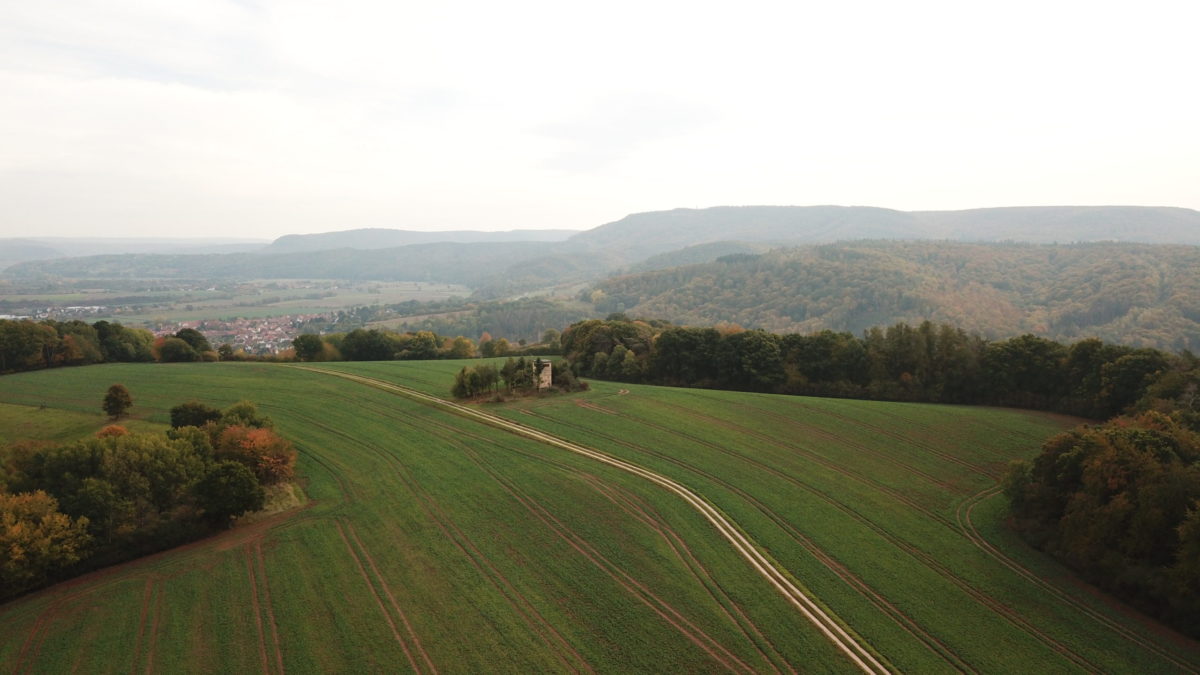
The best interaction with a local
While I cycled the route in Covid-times, there were still a few really interesting conversations along the way. The beauty of travelling the Iron Curtain Gravel Trail is that, apart from places like Point Alpha and Mödlareuth, you’ll get to experience Germany off the beaten track. Simply parking the bike outside a cafe sparked some interesting conversations. The older generations will have personal stories about the former border, and they are happy to share those. And although wild camping is not permitted in Germany, putting yourself to rest in a small hut, with plenty of choice along the route, will be mostly fine. My favourite interaction was talking to Matthias, who during a night with heavy rain, happily directed me to a bird watching shelter – the most beautiful place to spend the night and dry up.
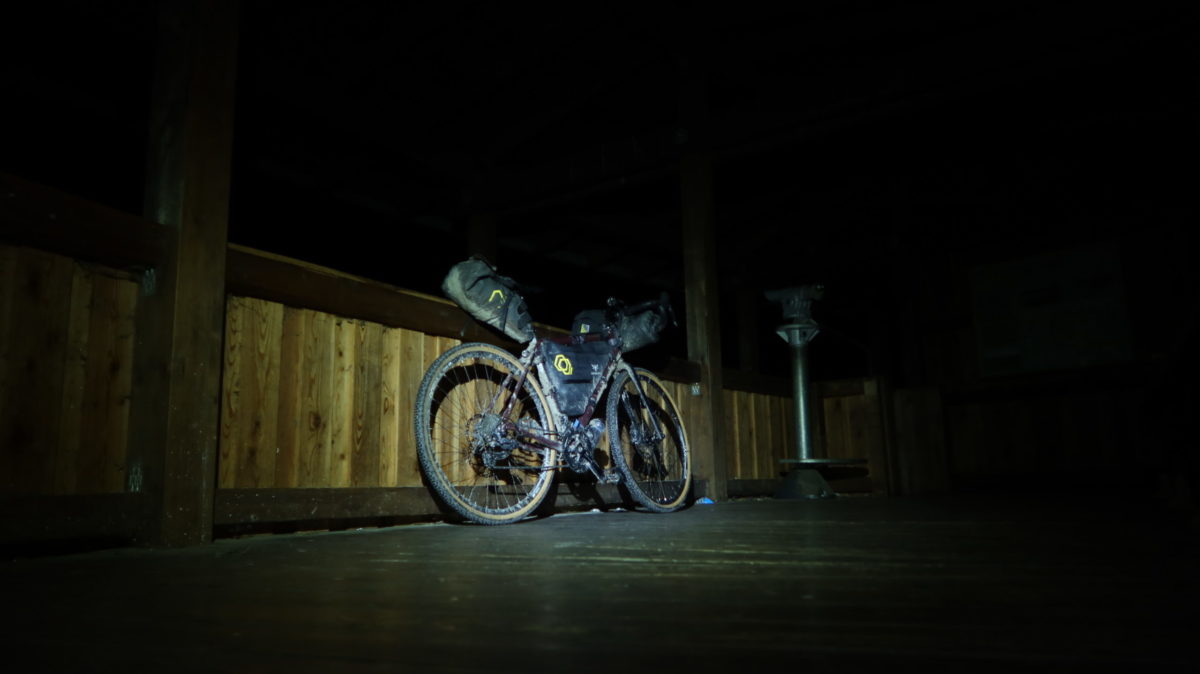
The best place to see the former border fortifications
The Grenzlandmuseum Eichsfeld at the former border crossing in Teistungen is the best place to see the former fortifications. As a lot of attractions and restaurants, it’s closed on Mondays. There is no entry charge for the outside exhibitions and original fortifications, and the Iron Curtain Gravel Trail takes you right past them.
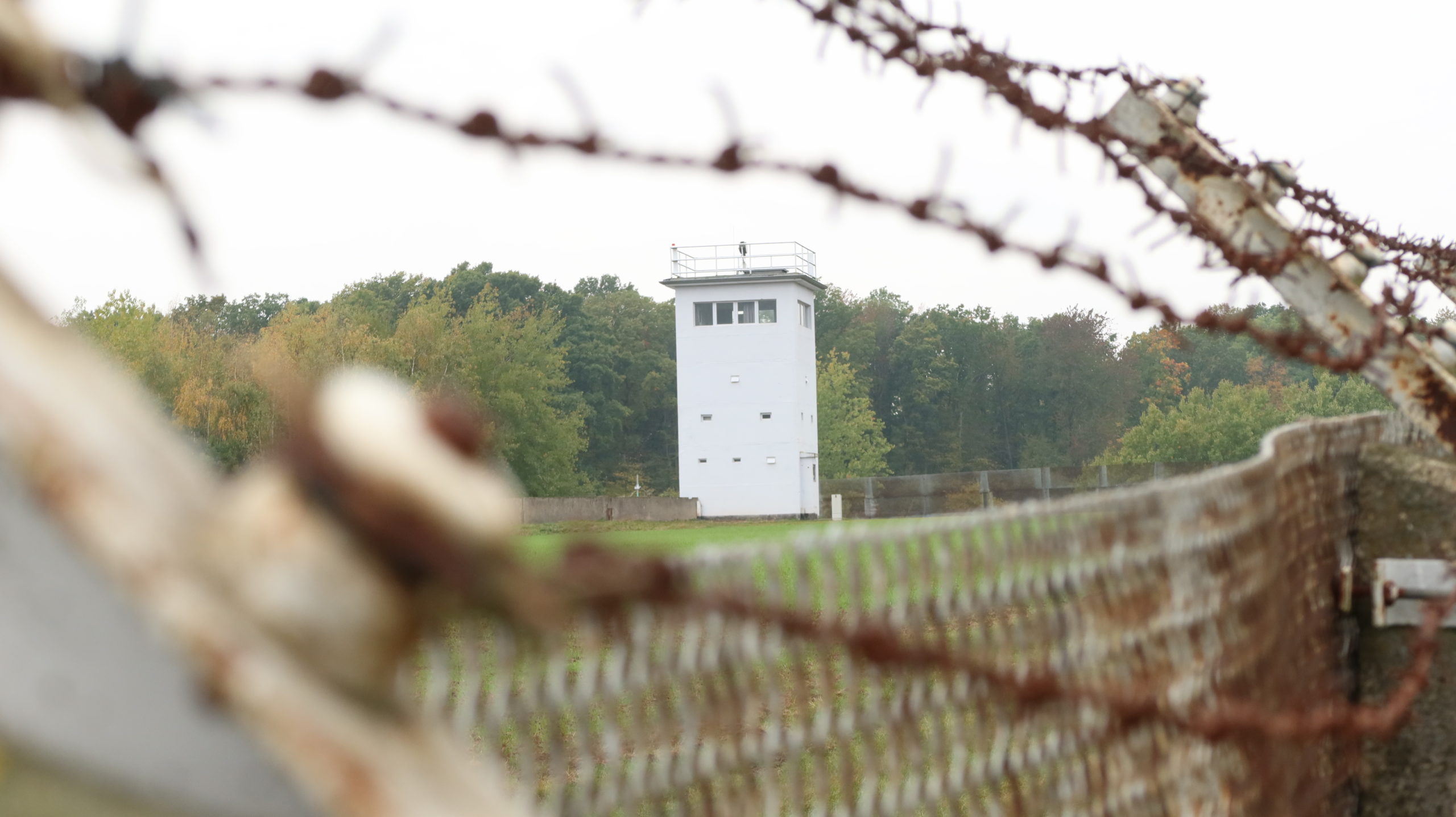
The best place to find out more about the Iron Curtain
Point Alpha in the Rhoen-Mountains near Geisa gives you a real good insight into the Cold War. On the site of a former US Army observation post, the ‘Haus an der Grenze’ (House on the Border) hosts a museum dedicated to the suffering of East German people in the restricted zone under the GDR border regime and a multimedia display dedicated to the Peaceful Revolution and its non-violent struggle for freedom and civil rights. You can experience the fortifications with well-preserved and partially reconstructed border installations, and climb the former observation tower of the US Army.
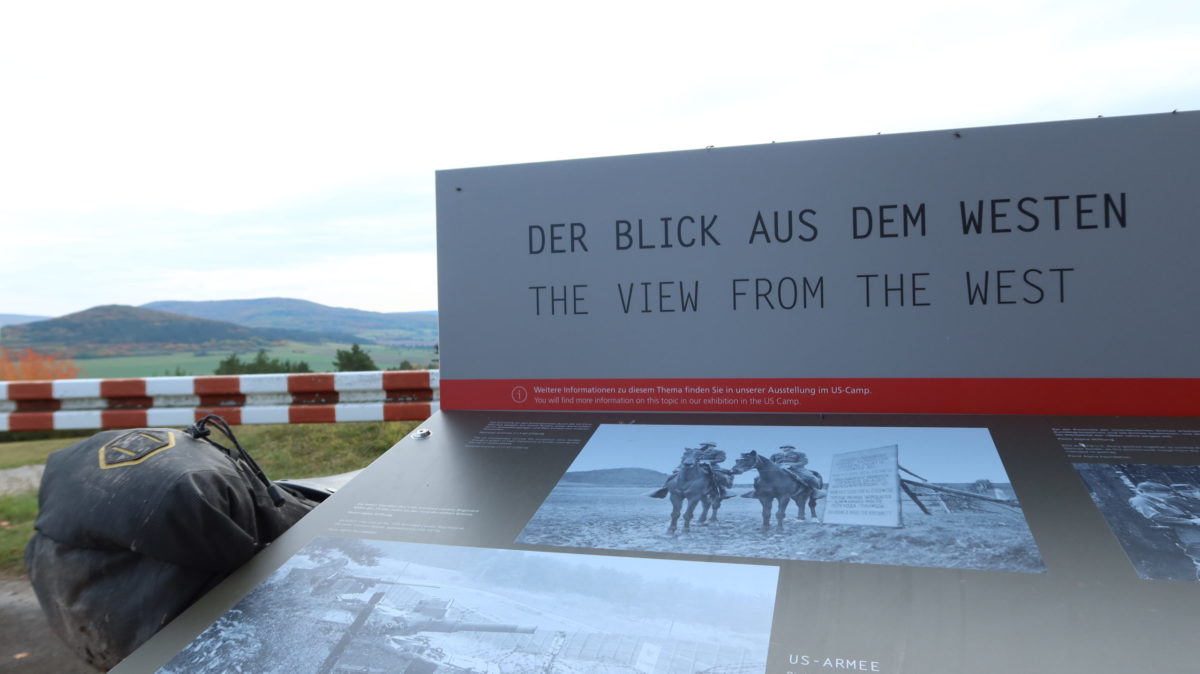
Point Alpha was one of the most important places in the Cold War. It was here that American and Soviet troops were facing each other directly, as the Fulda Gap offered one of the two obvious routes for a hypothetical Soviet tank attack on West Germany from East Germany. This is a popular destination, so it can get very busy during holidays, but the ‘Weg der Hoffnung’ (Path of Hope) is a great way to enjoy the site away from people. This sculpture path, starting at the museum, commemorates the events of the Peaceful Revolution and the liberation movement across the whole of Europe, and provides breathtaking views across the open landscapes of the Rhoen-Mountains.
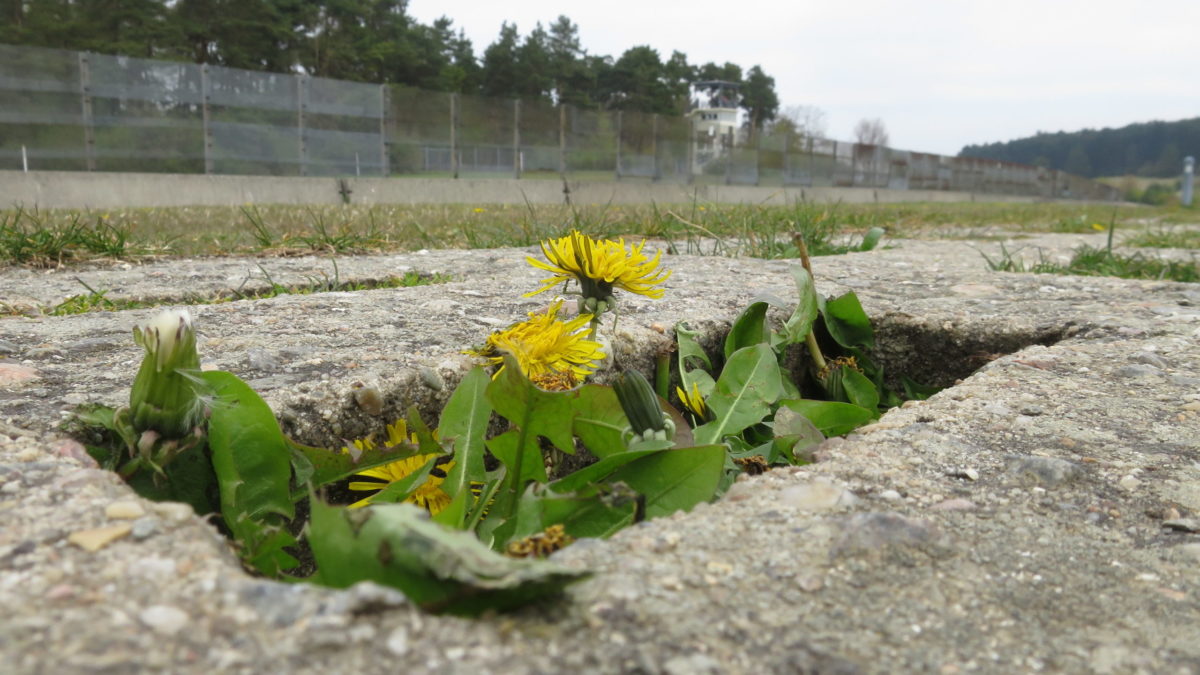
The best cafe on the route
Germans like their coffee, especially in combination with a good piece of cake in the afternoon. When cycling the route I stopped at the ‘Restaurant am Froschgrundsee’, and the hospitality there was second to none. It was so good that I forgot to take any pictures! Expect a variety of cake, coffee and tea choices, a welcoming interior and a smile, even when you walk in there in muddy shorts. The restaurant is run by Loreen and Hannes Scammell, who have worked across the world and returned to their roots in 2016, and offer fresh local food at reasonable prices.
The most interesting story
With the establishment of the occupation zones after the end of the Second World War, the small hamlet of Kleinlichtenhain belonged to Thuringia in the Soviet zone. It consisted of only three houses that bordered on the Bavarian Kleintettau in the American zone (good coffee here and Scottish Highland cattle here too). Neither Soviet or American soldiers could be seen in this rather remote area. The residents of the three houses felt they belonged to Kleintettau, and even took part in the elections for the municipal council, the Bavarian state parliament and the Bundestag. On 21 March 1962, the night before the planned start of construction on the border fortifications, 17 East German police officers visited the three houses in order to bring the then twenty residents into the East German hinterland. 18 residents fled with a few important things over to West German territory. The police officers left empty-handed, and only the remaining couple stayed in one of the houses in this soon-to-be-closed area. The other two houses fell into disrepair. In the following years strange conditions applied in Kleinlichtenhain. The postman was not allowed to deliver any mail there, police officers were prohibited from entering the area, as were employees of the Kleintettau community. The border course was finally changed by the German-German border commission in the Kleinlichtenhain area so that from 1 March 1976 the remaining house belonged to the municipality of Kleintettau in the Kronach district and thus to the Federal Republic of Germany. The two abandoned houses were demolished.
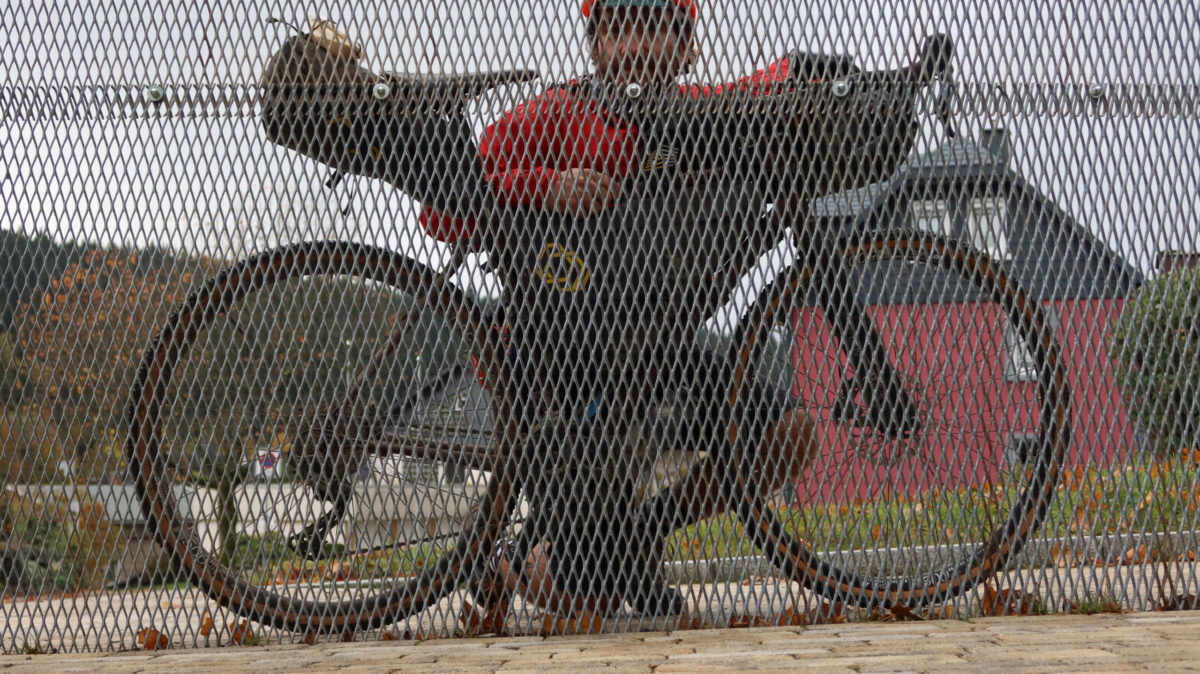
The best view
The ‘Teufelskanzel’ offers breathtaking views over the Werra Valley, backed up by a nice mountain hut that provides food and drinks for the perfect rest (bring cash). Located in the Nature Park Eichsfeld-Hainich-Werratal, and close to the well-known Hanstein Castle ruin, the Teufelskanzel is a good vantage point to view the horseshoe-shaped Werra River below, with Hoher Meißner and Kaufunger Wald in the background. A local saga has an explanation for the distinct shape of the river and origin of the rock: On Walpurgis night the devil was tasked with transporting a massive rock from the Harz-Mountains to Hoher Meißner. Getting tired he rested, and was soon found out by the witches. He left in anger, and the rock remained.
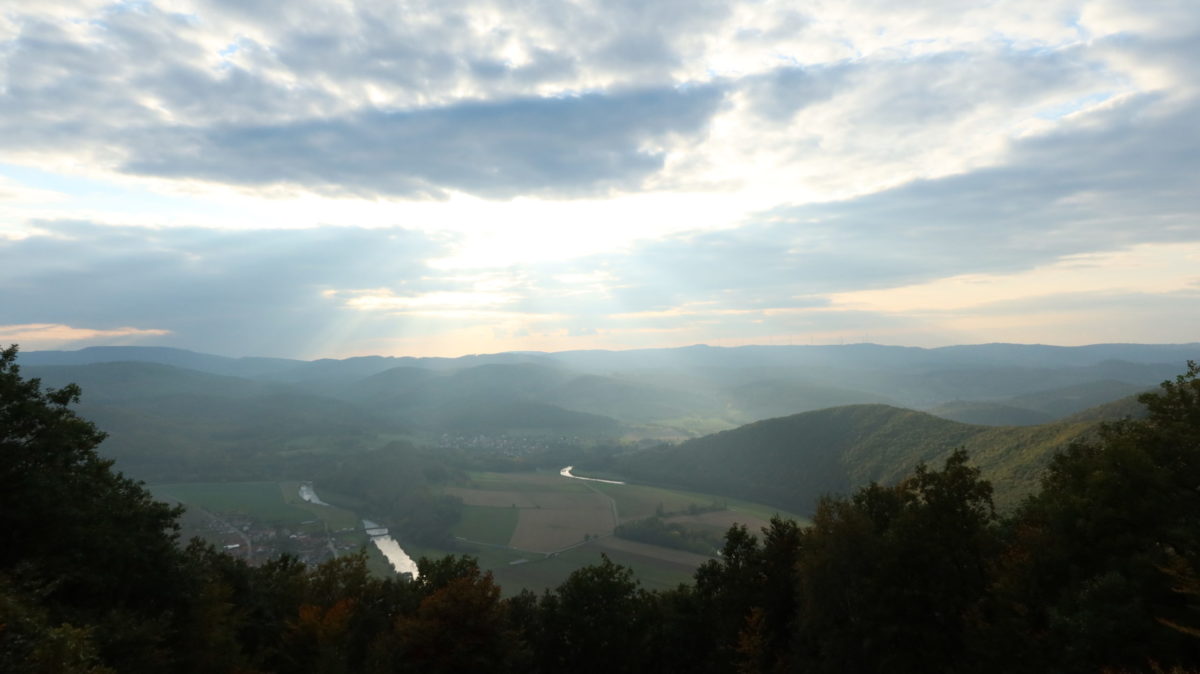
The best gravel section
The Rhoen-Mountains are a gem for gravel riding. Unlike most other lower lying ranges in Germany, the Rhoen-Mountains offer breathtaking open views across the landscape, broken up with native forests in between. My favourite section of the whole route was between Spahl and Motzlar, passing the Rößberg.
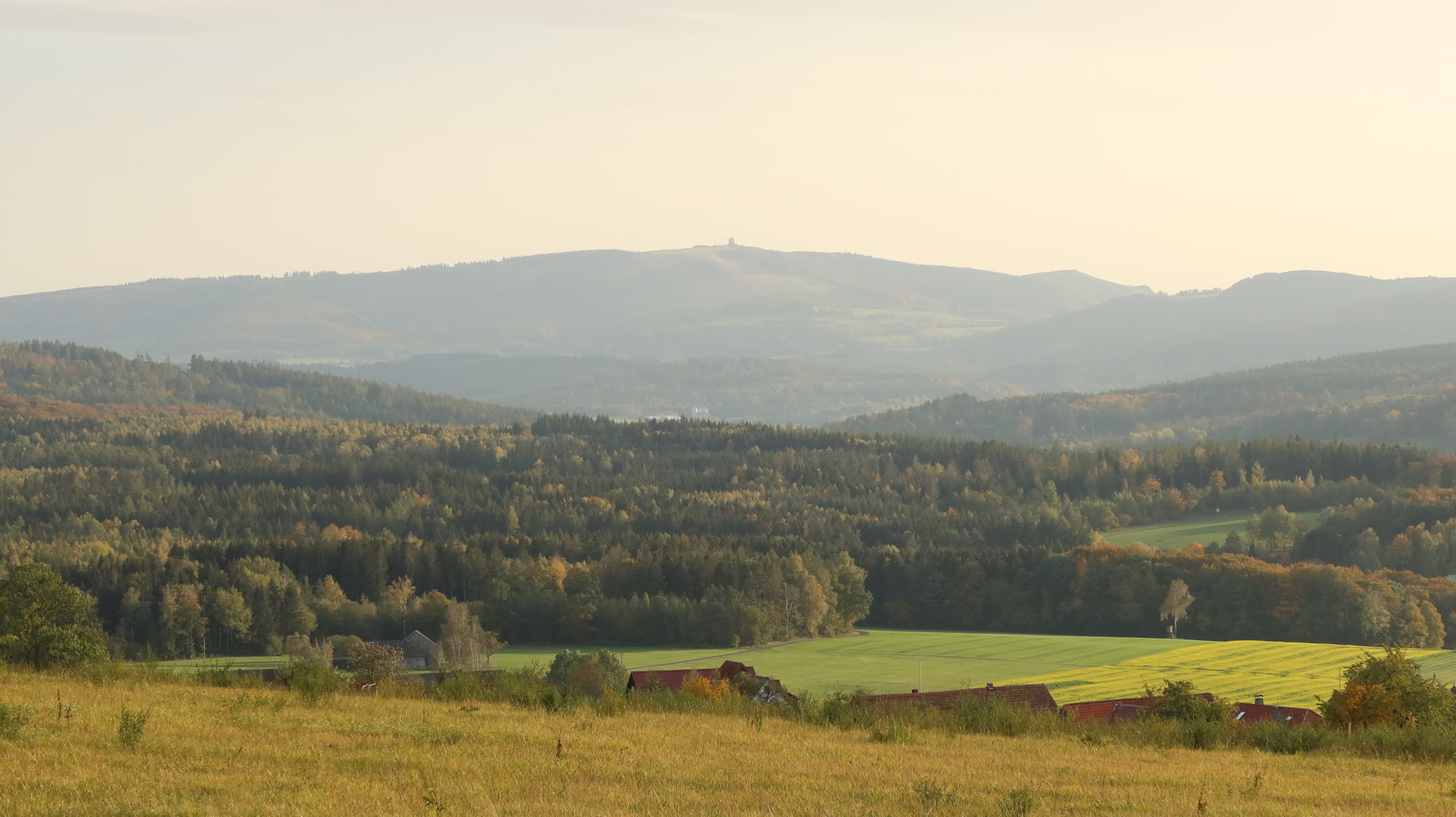
The most surreal place
‘Monte Kali’ and ‘Kalimanjaro’ are local colloquial names for the spoil heap that towers over the town of Heringen. Monte Kali thrones above the Werra River and can be seen from far afield. When I arrived in darkness and fog I could only see the lights of the massive digger on top of the mountain. During dawn it slowly came in sight, changing its colour from a dark grey to almost white as I circled around it. Lying next to the border, Monte Kali towers over Heringen and is a popular hiking attraction. Locals refer to it as ‘Kalimanjaro’, a play of words between Kali (short for Kalisalz, German for ‘potash’) and the famous volcanic peak Mount Kilimanjaro. More than 10,000 visitors climb the artificial mountain every year. While the mountain, which stands at 530 metres above sea level, almost reminds me of the impressive snow capped volcanoes of Chile, it is a much starker sign of the detrimental ecological impact of mankind. The amount of salt that goes to the region’s soil and rivers is enormous, to an extent that the Werra River, which forms a large part of the former border in this area, has become saltier than parts of the Baltic Sea.
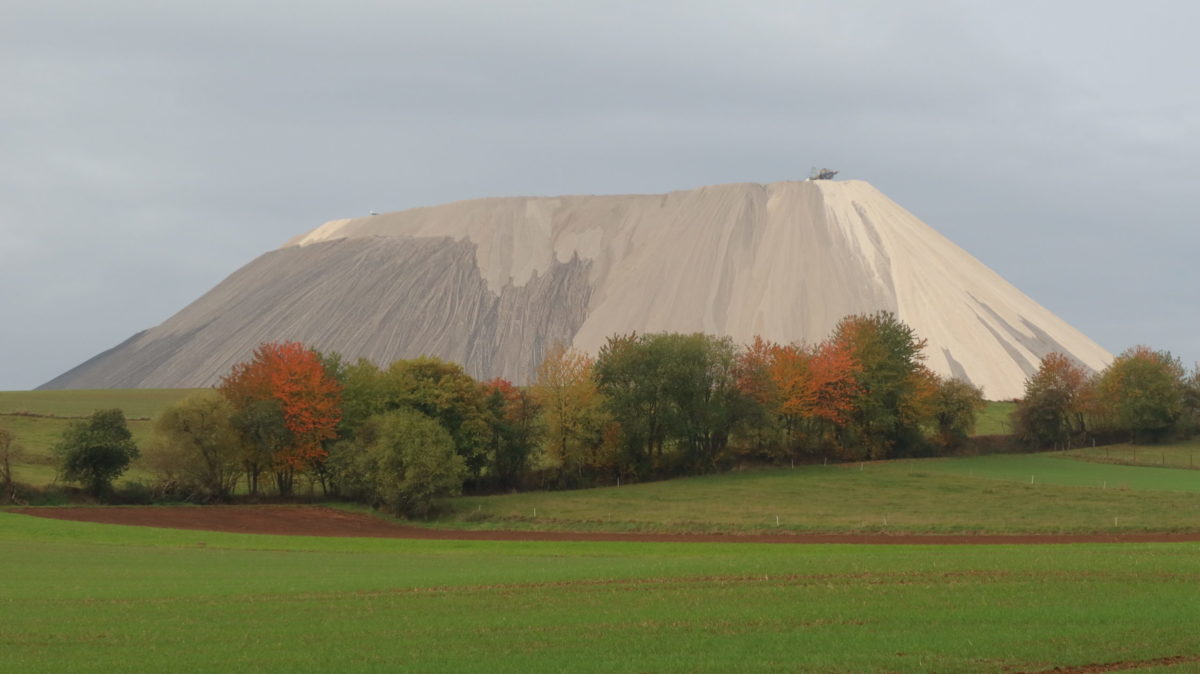
And finally, to plan your own Iron Curtain Gravel Trail Adventure, here is my packing list. You can find out more in the video about the Tout Terrain Vasco bike & kit. Happy riding!
Packing List
The Bike
- Tout Terrain Vasco GT 28 (prototype, combination of Vasco 21.3 & 21.4)
- Shimano GRX groupset with 48-31 double chainset on the front and 11-34 cassette on the back (similar to model 21.4), hydraulic brakes
- Cinq Carbon Touring Fork II 405mm (as used on model 21.3)
- ABUS Alarm Box
- Lezyne bottle cages/bottle
- Exposure MaXx D MK13 front, Diablo MK12 helmet and TraceR MK1 DayBright rear light
- Lezyne Mega C gps unit
- Schwalbe G-One Ultrabite RaceGuard, 700 x 38mm, E-25, ADDIX, Classic Sidewall tires, tubeless
Apidura Expedition Handlebar Bag (on bars)
- Vango Cobra 200 sleeping bag
- Exped SynMat HL M mattress
- 45NRTH Sturmfist 5 gloves
- Exped Schnozzel pump sack
- Rab bivvy bag
- Manfrotto mini tripod (on top)
Apidura Racing Top Tube Bag
- Canon G7x Mark III Camera & remote control
Apidura Expedition Full Frame Pack (in frame triangle)
- Lezyne STL Tools MultiTool 12
- Schwalbe tyre levers
- Schwalbe Aerothan tube
- Hand gel
- Apidura packable backpack
- Anker power bank
- iPhone cable
- Source water bottle
- Isolation tape
- Silicone tape
- Toilet paper
- Lezyne pocket drive pump
- Passport
- Schwalbe patches
- Keys
- Plastic spork
- Opinel knife
- Small bottle of Squirt lube
- Food
Apidura Expedition Saddle Bag
- Mountain Hardwear Ghost Whisperer down jacket
- The Overland Trawl beanie
- Aussie Grit running pants long
- Boxer shorts
- Petzl Tikka head torch
- Gas canister
- Vango stove
- Lighter
- Tea bags & coffee sachets
- Sea to Summit foldable cup & pot
- Ginger
- Porridge
- Merino socks
- Spare drone battery
- USB cable for lights & power bank
- USB plug
- Drone charger
- Washing up sponge
- Toiletries (tooth brush, tooth paste, soap)
- The Overland merino liner gloves
- The Overland waterproof shorts
On Body
- Rad Trail Long Day Hat
- Abus Airbreaker Road Bike helmet
- Face mask
- Buff
- The Overland short base layer
- The Overland long base layer
- Morvelo long gloves
- The Overland Barricade Jacket
- Morvelo bibs
- The Overland shorts
- Defeet knee warmers
- Merino socks
- Giro Rumble shoes
- iPhone 7plus
Source Hipster Ultra 5l Waist Bag
- DJI Mavic Pro drone in case & waterproof bag
- DJI Osmo Pocket
- Clamp for phone
- Spare battery pack for Canon camera
- Headphones
- Adapters for osmo
- Wallet
- Rode mic & cables